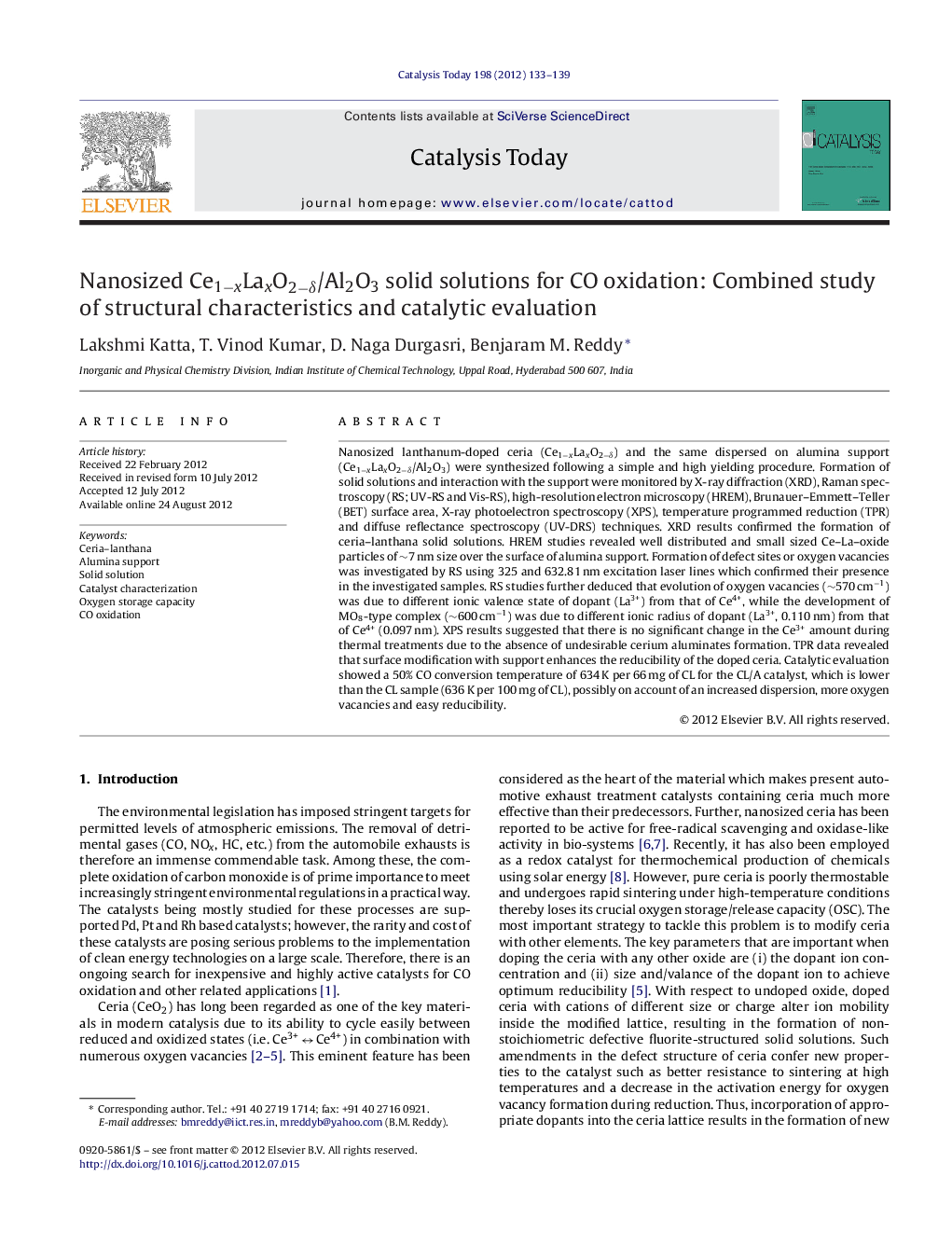| Article ID | Journal | Published Year | Pages | File Type |
|---|---|---|---|---|
| 55197 | Catalysis Today | 2012 | 7 Pages |
Nanosized lanthanum-doped ceria (Ce1−xLaxO2−δ) and the same dispersed on alumina support (Ce1−xLaxO2−δ/Al2O3) were synthesized following a simple and high yielding procedure. Formation of solid solutions and interaction with the support were monitored by X-ray diffraction (XRD), Raman spectroscopy (RS; UV-RS and Vis-RS), high-resolution electron microscopy (HREM), Brunauer–Emmett–Teller (BET) surface area, X-ray photoelectron spectroscopy (XPS), temperature programmed reduction (TPR) and diffuse reflectance spectroscopy (UV-DRS) techniques. XRD results confirmed the formation of ceria–lanthana solid solutions. HREM studies revealed well distributed and small sized Ce–La–oxide particles of ∼7 nm size over the surface of alumina support. Formation of defect sites or oxygen vacancies was investigated by RS using 325 and 632.81 nm excitation laser lines which confirmed their presence in the investigated samples. RS studies further deduced that evolution of oxygen vacancies (∼570 cm−1) was due to different ionic valence state of dopant (La3+) from that of Ce4+, while the development of MO8-type complex (∼600 cm−1) was due to different ionic radius of dopant (La3+, 0.110 nm) from that of Ce4+ (0.097 nm). XPS results suggested that there is no significant change in the Ce3+ amount during thermal treatments due to the absence of undesirable cerium aluminates formation. TPR data revealed that surface modification with support enhances the reducibility of the doped ceria. Catalytic evaluation showed a 50% CO conversion temperature of 634 K per 66 mg of CL for the CL/A catalyst, which is lower than the CL sample (636 K per 100 mg of CL), possibly on account of an increased dispersion, more oxygen vacancies and easy reducibility.
Graphical abstract.Figure optionsDownload full-size imageDownload high-quality image (104 K)Download as PowerPoint slideHighlights► Lanthana modified ceria exhibits better redox performance than bare ceria. ► Significance of γ-Al2O3 as a support for ceria–lanthana solid solution is addressed. ► Alumina supported ceria–lanthana exhibits better CO oxidation activity. ► The key parameters that involved in tuning the activity are discussed.
